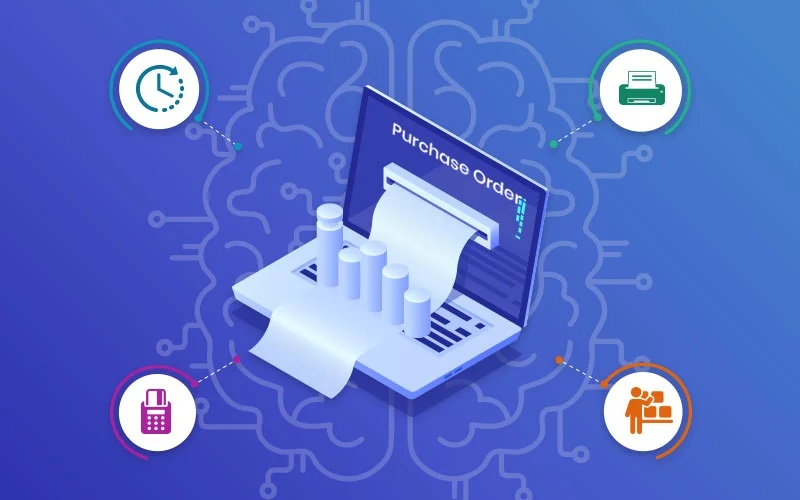Managing purchase orders manually can be a time-consuming and error-prone process, especially for growing businesses. A purchase order system for small businesses helps streamline procurement by automating tasks like order approvals, vendor communication, and invoice matching. This automation falls under key areas of digital transformation, enabling businesses to reduce costs, improve efficiency, and enhance compliance.
For companies still relying on spreadsheets and emails for purchase orders, automation offers a game-changing shift. As businesses continue to embrace areas of digital transformation, adopting a modern purchase order system for small businesses is no longer optional—it’s necessary for maintaining a competitive edge. Below, we explore the top six benefits of automating your purchase order process and why it’s a smart investment for your business.
1. Increased Efficiency and Time Savings
Manual purchase order (PO) processes require extensive paperwork, approvals, and back-and-forth communication, leading to significant delays. Automation eliminates these inefficiencies by digitizing workflows, ensuring that POs move smoothly from request to approval without bottlenecks.
With an automated purchase order system for small businesses, employees can create, approve, and track orders in real-time. Automated notifications ensure that approvals happen on time, preventing unnecessary delays. This efficiency enables procurement teams to focus on strategic tasks instead of chasing paperwork.
2. Reduced Errors and Improved Accuracy
Human errors in purchase orders can lead to incorrect orders, duplicate purchases, or payment discrepancies. A single miscalculation or missing detail in a manual PO can disrupt inventory management and financial planning.
Automating the PO process reduces errors by standardizing data entry and enforcing validation rules. Many systems also include AI-powered features that flag inconsistencies or potential mistakes before processing. This results in accurate documentation, reducing costly procurement mistakes.
3. Enhanced Visibility and Control Over Spending
One of the biggest challenges in procurement is tracking and managing expenses effectively. Without a structured PO system, businesses struggle to maintain control over spending, leading to budget overruns and unapproved purchases.
An automated purchase order system provides full visibility into spending patterns, ensuring that every purchase is approved, recorded, and aligned with the company’s budget. Real-time tracking allows finance teams to monitor expenditures and generate reports instantly, making financial planning more predictable and transparent.
4. Stronger Vendor Relationships and Faster Payments
Delayed approvals and payment discrepancies can strain relationships with vendors. Manual PO processes often lead to late payments, miscommunications, or lost orders, affecting supplier trust and reliability.
With an automated system, purchase orders are processed faster, and invoices are matched seamlessly, ensuring timely payments. This fosters stronger vendor relationships, which can lead to better pricing, priority service, and long-term partnerships. Suppliers appreciate working with businesses that offer streamlined, predictable procurement processes.
5. Improved Compliance and Audit Readiness
Regulatory compliance is a critical aspect of procurement, and failing to maintain accurate records can lead to financial and legal risks. Manual PO systems make it difficult to track and audit purchase histories, increasing the chances of non-compliance.
Automation ensures that every transaction is documented, stored, and easily retrievable for audits. A digital purchase order system for small businesses includes built-in compliance checks, approval hierarchies, and digital recordkeeping, helping companies meet regulatory standards effortlessly. Whether it’s for tax reporting or internal audits, automated systems make compliance stress-free.
6. Cost Savings and Scalability
One of the most significant advantages of automating the purchase order process is cost savings. By eliminating manual tasks, businesses reduce labor costs, minimize errors, and optimize cash flow. Additionally, automation helps avoid unnecessary purchases and ensures budget adherence.
For growing businesses, scalability is a key consideration. Manual processes become increasingly difficult to manage as purchase volumes rise. Automation allows businesses to scale procurement operations efficiently without adding extra administrative burden. Whether handling ten or a thousand POs a month, an automated system adapts seamlessly to business needs.
Conclusion
Automating the purchase order process is no longer a luxury—it’s a necessity for businesses looking to improve efficiency, accuracy, and financial control. By implementing a purchase order system for small businesses, companies can reduce errors, enhance vendor relationships, ensure compliance, and save costs, all while embracing key areas of digital transformation.
If your business still relies on manual POs, now is the time to make the shift. With the right automation tool, you can streamline procurement, reduce delays, and position your business for long-term success.

